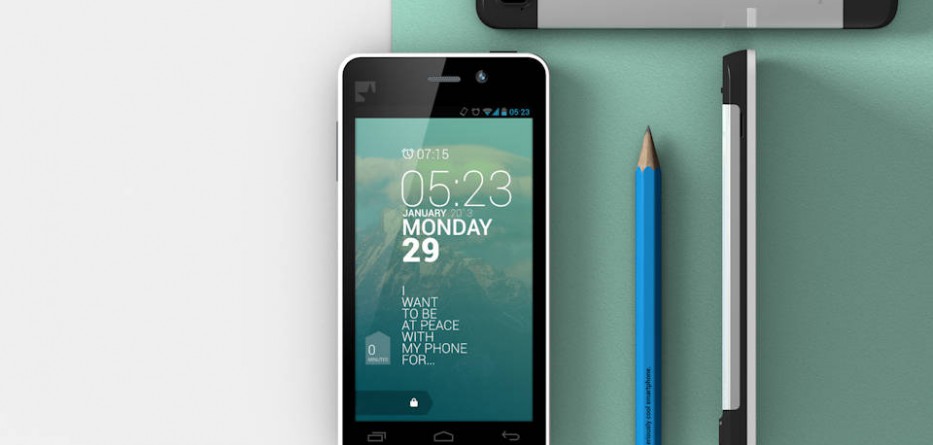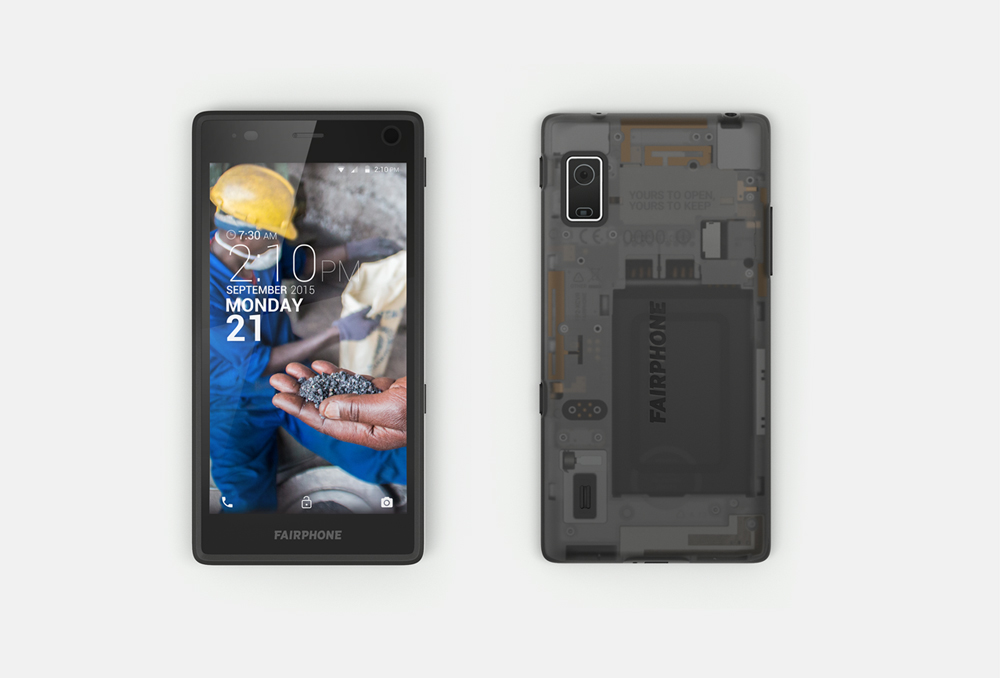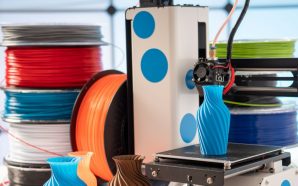Two years after Fairphone launched its debut gadget, the firm is back with an altogether more interesting follow-up.
Fairphone’s first handset was released in 2013, and was intended to be a more equitable device — one which used fairly traded supplies and put a premium on better working conditions for those that assembled the handset. Despite coming from an unknown Dutch startup, 60,000 individuals went on to purchase the handset.
Because of the firm’s startup status, Fairphone’s first handset was based on a reference design from its initial manufacturing partner. The design of the Fairphone 2, however, was more under the company’s control, enabling it to bring in a new, modular design.
By allowing customers to swap out elements of their smartphone — the screen or headphone jack, for instance — if they break or want an upgrade, Fairphone hopes that customers will have the ability to keep their smartphones for much longer than the normal two-year upgrade cycle with out feeling like they are suffering as a consequence. Result: fewer old handsets ending up in landfill.
“We came up with the original concept of [a phone] that you might disassemble, maintain, restore and ultimately upgrade… We had a goal in mind: the basic idea was we wanted to have individuals use it for about 5 years. It sounds lengthy in this day and age, however when you go back about 5 years, that is the iPhone 4S, and there are still lots of people utilizing an iPhone 4S,” Olivier Hebert, the firm’s CTO, said
Taking the modular concept from the drawing board to shop cabinets has been no straightforward task. “A normal cellphone is one monolithic block with every thing built-in and you’ve got a couple of exterior surfaces, and that is it. We now have seven different components [the modules that make up the phone], and each single one of them is a product in itself. All that complexity you need to create a cosmetically right product, you’ve that multiplied by seven.”
What’s inside the Fairphone
So what is the smartphone like to use? It is a tougher cellphone to evaluate than many of its contemporaries because it manages to be both an average mid-range Android, and somewhat special, at the same time.

The Fairphone 2 opened up – Source: ZD Net
At the basic level, it has a big, bright display; at 32GB it has a fairly large memory; and it has a solid processor, the Snapdragon 801. It is light to carry, however with a 5-inch display and a half-inch of bezel, it is chunky in the hand. That sense of chunkiness isn’t dispelled by the cellphone’s depth.
That is partially due to the Fairphone 2’s built-in protective case that snaps on and off the handset — options include a rather smart semi-translucent darkish blue number. The cases have a rubber bumper that goes around the cellphone’s edges and onto the front, to guard the handset from the drops and falls that may end up in a smashed display screen — another way the company has provided you with something that can keep handsets from an early exit.
The case/back of the cellphone can be a bit fiddly to get back on once you have removed it, which might be a ache if you happen to be one of those people that like to swap SIMs. However even when you’re one of those individual, you will not have to be remove the case too often, because the Fairphone 2 is Dual-SIM to begin with.
After you have got the case off, that is when you begin to see why the Fairphone is anything but an average Android. Inside you will discover a replaceable battery, rather than the usual gruff ‘opening your cellphone will void your warranty’ you are used to seeing, there is a quite sweet message: ‘yours to open, yours to keep’.
Fairphone’s main selling point is that the cellphone could be taken apart — and elements changed — by even those that would not usually dream of tinkering with their handset.
Replacing the 5-inch Full HD display, for instance, does not require any instruments — simply take off the back, move two clips to one side to release the display screen, and slide it off. Straightforward. Those used to being requested to provide tech support for buddies’ gadgets will probably be relieved to know that the display repair here is the kind of job even the most tech-shy can accomplish with out any help.
Swapping out other modules requires a screwdriver, however by all accounts is a far-from-tough business: iFixit has a teardown that goes through the process in more detail, and offers the gadget 10/10 for repairability.
While the concept behind the modular design was inspired by that idea of repairability, it isn’t impossible that sooner or later it might be used to offer an upgrade path — if you want a better processor, for instance, you may simply substitute the unit, not the entire cellphone. Hopefully, that is not a thousand years away: the one letdown is an under-powered camera, and it would be nice to have the option to replace it in the future.
Similarly, a bigger battery (the Fairphone 2’s is presently 2420mAh) could be a good thing: its present size serves to illustrate the difficulties of constructing a modular smartphone. “It was a problem to get a decent sized battery into the cellphone, there is a lot of stuff in there. The battery was constrained by the space we had available. We had to redesign the chassis a few times to increase the battery capacity. That proved to be very sophisticated — each time you move one thing, every thing must shift. Moving something by 0.1 mm has implications all over the place,” stated Fairphone’s Hebert.
The OS
For all its innovation on the hardware front, Fairphone has chosen a much more standard path for the software: the Fairphone 2 runs Android 5.1. It is a choice that was taken to provide the handset the largest market possible.
“The fundamental thought was to have an Operating System that might be appropriate for the overwhelming majority of customers so they would not feel out of place and they may get what they needed. It must be exactly as any other regular Android smartphone,” he mentioned.
For those who want to do something different, there are different choices on the way: Fairphone is going to launch the full development environment for the smartphone and the firm is working with Finnish software startup Jolla to port its OS, Sailfish, to the device. “We wanted to make the hardware as open as possible for software development so individuals can port what they want on it,” Hebert stated.
The price may put some common smartphone consumers off: at €529 (US $574) it isn’t low cost and, because it’s sold directly via Fairphone, there are not any operator ‘subsidies’ to soak up a bit of the price.
Nonetheless, Fairphone is not actually pitched at common buyers. Its market is more likely to be those that are more environmentally minded or socially conscious, those that like tinkering with their handset, or an intersection of the two.
It may not be as pretty as a new iPhone or as extremely spec’d as the latest Galaxy S model, however there’s something genuinely different and great about the Fairphone 2.










